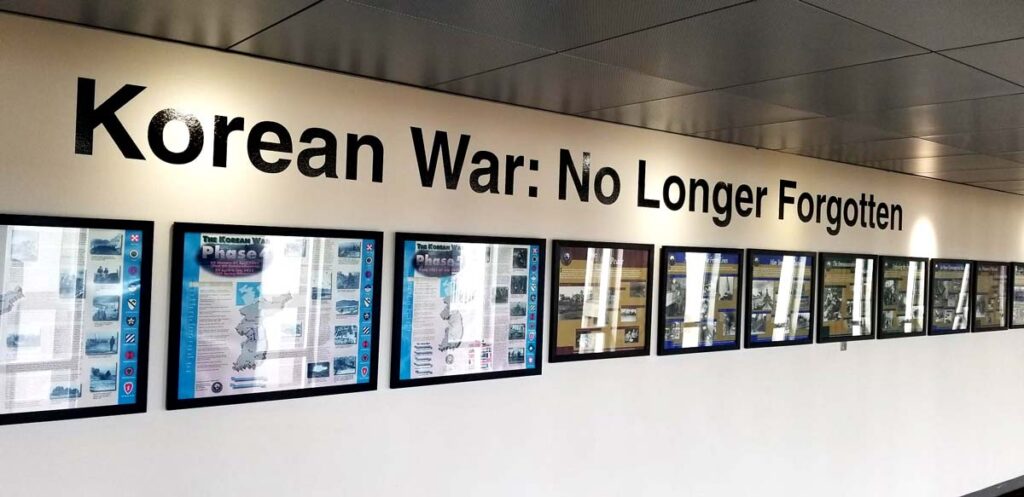Located on the 4th floor of the WMC, you will find images and posters where you can learn about the many phases of the Korean War. This set of 15 Korean War Posters was produced and distributed by the Department of Defense to commemorate the 50th Anniversary of the Korean War.
Located on the 4th floor of the WMC, you will find images and posters where you can learn about the many phases of the Korean War. This set of 15 Korean War Posters was produced and distributed by the Department of Defense to commemorate the 50th Anniversary of the Korean War. This conflict between the Democratic People’s Republic of Korea (North Korea) and the Republic of Korea (South Korea) in which at least 2.5 million persons lost their lives. The war reached international proportions in June 1950 when North Korea, supplied and advised by the Soviet Union, invaded the South. The United Nations, with the United States as the principal participant, joined the war on the side of the South Koreans, and the People’s Republic of China came to North Korea’s aid. After more than a million combat casualties had been suffered on both sides, the fighting ended in July 1953 with Korea still divided into two hostile states. Negotiations in 1954 produced no further agreement, and the front line has been accepted ever since as the de facto boundary between North and South Korea.

Located on the 4th floor of the WMC, you will find images and posters where you can learn about the many phases of the Korean War. This set of 15 Korean War Posters was produced and distributed by the Department of Defense to commemorate the 50th Anniversary of the Korean War. This conflict between the Democratic People’s Republic of Korea (North Korea) and the Republic of Korea (South Korea) in which at least 2.5 million persons lost their lives. The war reached international proportions in June 1950 when North Korea, supplied and advised by the Soviet Union, invaded the South. The United Nations, with the United States as the principal participant, joined the war on the side of the South Koreans, and the People’s Republic of China came to North Korea’s aid. After more than a million combat casualties had been suffered on both sides, the fighting ended in July 1953 with Korea still divided into two hostile states. Negotiations in 1954 produced no further agreement, and the front line has been accepted ever since as the de facto boundary between North and South Korea.
Memorial Day to Labor Day
8AM-8PM daily
Labor Day to Memorial Day
8AM-6PM daily